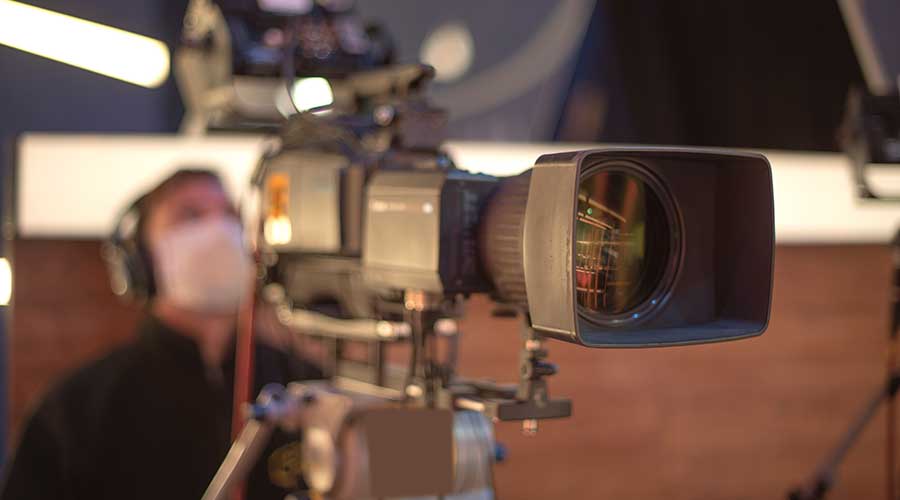In the current age of “fake news,” it is important that everything that gets put out onto the internet is the truth. During the COVID-19 pandemic, the healthcare industry learned how quickly misinformation can spread with very little ways to stop it. Because of this, hospitals and other healthcare facilities have begun adding production studios to their buildings to help combat this and help improve branding. Healthcare Facilities Today recent spoke with Peter Provost, president and director of design at Provost Studio about how the healthcare industry is at a digital crossroad and what benefits having an in-house production studio can do.
HFT: Are there challenges or ethical considerations associated with the use of production studios in healthcare settings? Please explain.
Provost: It’s crucial to ensure the accuracy of healthcare information produced in a studio setting as inaccurate or misleading content can have serious consequences for patient understanding and decision-making. Quality control measures must be in place to verify the accuracy of the information presented. Additionally, content needs to prioritize patient education and unbiased information rather than supporting specific products or services as influenced by the healthcare corporation’s commercial interests.
As healthcare facilities must adhere to strict privacy and confidentiality standards, such as HIPAA, production studios likewise need to ensure that patient information is handled securely and that any visual or written content doesn't compromise patient privacy. Producers should also incorporate industry accessibility standards so that diverse audiences, including those with disabilities, can access and understand the content.
HFT: In what ways do production studios contribute to building a positive brand image for healthcare facilities?
Provost: High-quality production and professional content creation contribute to an image of competence and credibility for healthcare facilities. Well-produced videos, animations and multimedia content reflect positively on the brand’s commitment to delivering excellence in patient care. It helps set the stage for a patient-focused approach that is informative, effective and catered to the needs of the patients. This translates into a positive image of the healthcare personnel as knowledgeable and engaging. The incorporation of technologically-advanced multimedia such as VR and XR further contribute to a brand image that is innovative and forward-thinking.
HFT: Can you share examples of creative approaches healthcare facilities have taken in using production studios to address public health issues?
Provost: Healthcare facilities can creatively address public health issues using production studios by developing visually impactful public service announcements (PSAs), interactive educational games and virtual reality experiences. Animated infographics and storytelling campaigns can simplify complex information and connect with diverse audiences, while live-streamed events, educational podcasts and multilingual content ensure broad accessibility. These approaches not only disseminate crucial public health information but also foster community engagement and positive behavior change.
HFT: How are healthcare facilities measuring the effectiveness of content produced in their production studios?
Provost: Healthcare facilities measure the effectiveness of content produced in their production studios through various metrics, depending on the goals and objectives of the content programming. These include tracking audience engagement on social media platforms and website analytics, gathering feedback through surveys and assessing patient education outcomes and behavioral changes. They can also conduct brand perception surveys, track media coverage and obtain feedback from healthcare providers and employees.
HFT: How do healthcare facilities balance the need for engaging content with the requirement for accurate medical information in their production studio outputs?
Provost: Balancing entertainment and education in healthcare content is crucial. While we strive to create engaging content that will captivate the audience's attention, it's essential to not lose focus of the primary objective, to deliver accurate information and educate the user. Emphasizing entertainment at the expense of educational value may dilute the effectiveness of the content and compromise its integrity. Healthcare facilities should prioritize conveying information that is evidence-based, relevant to the audience and directly contributes to enhancing health literacy. By incorporating elements of engagement, such as storytelling, visuals, or interactive features, content can effectively resonate with the audience, fostering better understanding, retention and positive behavior change. Striking this balance ensures that healthcare communication remains informative, credible and impactful.
Mackenna Moralez is the associate editor of the facilities market.

 Designing Healthcare Facilities for Pediatric and Geriatric Populations
Designing Healthcare Facilities for Pediatric and Geriatric Populations Kaiser Permanente Announces New Hospital Tower at Sunnyside Medical Center
Kaiser Permanente Announces New Hospital Tower at Sunnyside Medical Center Building Disaster Resilience Through Collaboration
Building Disaster Resilience Through Collaboration Amae Health Expands to New York City
Amae Health Expands to New York City Hospital for Special Surgery Opens Two New Facilities in New Jersey
Hospital for Special Surgery Opens Two New Facilities in New Jersey